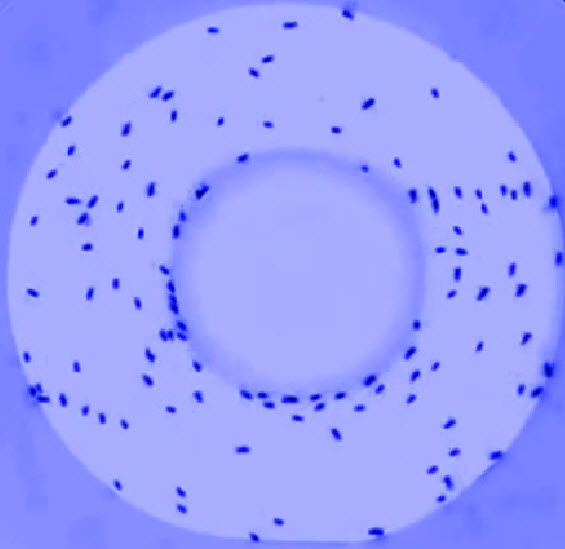Social networking for locusts
July 15, 2011

Swarming locusts (credit: Gerd Zschaler et al.)
Insect swarming is created by the same kind of adaptive-network mechanisms that humans adopt for social networks, researchers at the Max Planck Institute for Physics of Complex Systems have determined.
The researchers used ideas from studies on opinion formation in social networks, such as Facebook and Twitter, and applied them to a study of 120 locusts marching in a ring-shaped arena in the lab.
Locusts “like” each other — really like
Locusts rely heavily on swarming because they are cannibalistic. The researchers found that the social interactions involved convincing others to walk in the same direction as they march across barren deserts, keeping track of each other so they can remain within striking distance to consume one another — a cruel but efficient survival strategy.
“We don’t necessarily pay more attention to those doing the same as us, but many times [we pay more attention] to those doing something different,” said Gerd Zschaler of the Max Planck Institute.
Ref.: Gerd Zschaler, et al., Adaptive-network models of swarm dynamics, 2011; [DOI:10.1088/1367-2630/13/7/073022] (free access)